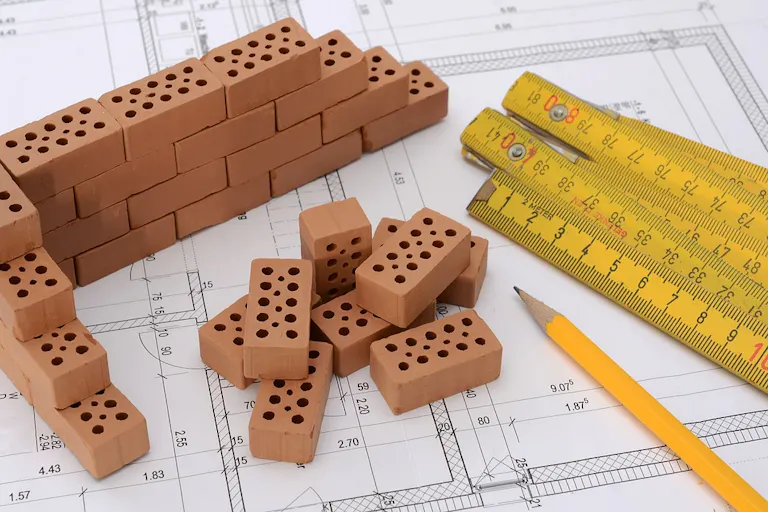Fill out the form to get more information about the Fullstack Academy bootcamp of your choice.
05.13.2025
Software Engineer vs. Software Developer—What’s the Difference?
By The Fullstack Academy Team

Last updated 05/07/2025
In software creation, the job titles of software engineer and software developer are often used interchangeably. Even the Bureau of Labor Statistics makes no distinction, placing these two roles into the same category in the Occupational Outlook Handbook.
However, most IT industry insiders know that software engineers are not quite the same as software developers. The difference between these two roles lies in the engineering training required, the scope of the job function, and, in many cases, position, or authority level.
Continue reading to understand the subtle differences between a software engineer versus software developer.
Software Engineer vs. Software Developer: Key Differences

Software engineers and developers often work hand-in-hand to create applications, but each plays a unique role in the process and has different responsibilities. Developers and software engineers differ in a few main ways:
Software developers are responsible for ensuring that software functions properly. Software engineers ensure that the software meets the client's needs and requirements.
Software engineers typically work collaboratively, but software developers often work independently.
In most cases, software engineers typically work on the entire product lifecycle, while software developers focus on one part of the project.
Software engineers work on a much larger scale, so they must be more methodical to achieve the specific requirements of the software. Software developers have more room for creativity since they build and execute a software solution.
Here’s a table summarizing some critical differences between the two vocations.
Software Engineer | Software Developer | |
Job Role | Planning, designing, developing, and building software or computer systems. | Developing a given software or computer system. |
Needed Skills and Educational Requirements |
|
|
Suggested Career Path | Begin with an entry-level engineer role (e.g., Engineer I or junior engineer). Move into a lead software engineering role that usually requires leadership and mentorship of additional junior engineers. | Begin as an entry-level developer, QA, or tester. Move into a lead developer or technical architect role. Advanced roles are managerial and are often less collaborative than software engineering roles. |
Work Culture | Works in a highly collaborative environment, typically with other engineers, but often also collaborating with external teams such as product and design. | Works more independently, although sometimes collaborating with other developers and engineers. |
Annual Salary |
Software Engineer vs. Software Developer: The Similarities
Software developers and engineers are crucial to the creation and production of software. Similarities between the two roles include:
They both have a hand in creating software programs and systems.
They both require knowledge of comparable computer programming languages.
They both write and test code.
They use comparable libraries and frameworks (e.g., Ruby on Rails, Spring, Django, TurboGears).
Are Software Engineer and Software Developer Job Titles Used Interchangeably?
Yes, they often are. These terms are often used interchangeably, although each role has its distinctions. However, the exact job title depends on your organization and the specific software engineering environment it has.
There’s nothing inherently wrong with using the terms interchangeably, but if this may be an issue for you, research the companies you’re applying to and see how they use both terms.

What’s a Software Engineer?
The key phrase in this job title is “engineer.” Engineer’s Edge states, “Engineering is the discipline, art, and profession of acquiring and applying scientific, mathematical, economic, social, and practical knowledge to design and build.”
Related to software, an engineer is responsible for the entire product development life cycle. This means the engineer notices a need (or is given a problem) and designs a holistic solution, including all its interconnected components. Before starting their design, they consult with stakeholders and gather project requirements.
To develop the technical expertise needed for this profession, software engineers complete a bachelor’s degree in computer science, a related engineering discipline, or graduate from a coding bootcamp.
Engineering Principles
There is no book of universal engineering principles that all engineers use in their design. Instead, each engineer may define and apply their principles to each software solution in its specific environment.
Many software engineering teams do, however, subscribe to what’s known as the 12 principles of agile development or some variation of them. These are the original principles as laid out in the Agile Manifesto:
Ensure that the highest priority is to satisfy the customer through early and continuous delivery of valuable software.
Welcome changing requirements and harness the power of change for the customer’s competitive advantage.
Deliver software in frequent cycles.
Maintain stakeholder collaboration, including IT and business teams, throughout the project.
Build a culture of trust, motivation, and support to get the job done.
Convey information via face-to-face communication where possible.
Measure progress primarily through working software.
Build development processes that are efficient to the point of indefinite sustainability.
Pay continuous attention to technical excellence.
Prioritize simplicity—the art of maximizing the amount of work not done.
Remember that the best architectures, designs, and requirements emerge from self-organizing teams.
Reflect regularly as a team on how to be more efficient.
Software Engineer Job Description
Even in job descriptions, “software engineer” and “software developer” are sometimes interchangeable. Still, a closer look into the job description should reveal which roles an organization is hiring for. Here are some skills, qualifications, and responsibilities you may find in a software engineering job description.
Software Engineer Skills and Qualifications
Experience creating and maintaining IT architectures and databases
Problem-solving skills
Pattern design and experience with cloud-based infrastructure
Embedded development/debugging experience
Experience with multi-core CPU or SMP
Knowledge of multiple programming languages, including C/C++
Responsibilities
Design, develop, unit-test, and maintain embedded networking software
Work closely with the QA team in developing test plans
Liaise with product marketing and customer success teams
Work across teams to provide technical guidance and support the entire development process of the product
Salary
Software engineers earn an annual average salary of $123,547, reflecting the high demand for their skills in today's technology-driven economy. Salaries can vary based on experience, education, geographic location, and the specific industry in which they work. Entry-level software engineers may start with lower compensation, while senior engineers, especially those with specialized expertise or working in high-cost regions, can earn significantly more. In addition to competitive salaries, many software engineering roles also offer benefits such as bonuses, stock options, and flexible work arrangements. Software engineers can also take on freelance work to increase their income.
Certifications or Degrees
There are multiple training routes that can lead to a successful career in software engineering. Some software engineers decide to earn a bachelor’s degree in computer science, information technology, or a related field, which provides training in coding, math, theoretical concepts, and other key fundamentals. Some software engineers choose to receive training through coding bootcamps to quickly upskill or add to their skills. Bootcamps offer hands-on training and certification and are an excellent option for professionals, whether or not they have a college degree.
Programming Languages and Daily Tasks
Software engineers use a system-level approach to solve problems, considering how potential solutions could affect the organization’s whole system rather than only one component. Additionally, software engineers regularly collaborate with other engineers, stakeholders, and customers to ensure that software applications or systems meet requirements.
Software engineers routinely use a range of computer programming languages, like CSS, Python, JavaScript, Java, C++, and HTML.
Software Engineering Careers
A career in software engineering can include different specialties. Here are a few examples of potential roles in software engineering:
Front-End Engineer: These software engineers build the user interface for websites and applications.
Back-End Engineer: Direct opposites of front-end engineers, back-end engineers work on the server side of websites and applications.
Full-Stack Engineer: These software engineers combine the skills of front-end and back-end engineers to work on both sides of the application.
DevOps Engineer: Short for “development and operations,” DevOps engineers oversee code release and deployment of applications.
Data Engineer: Data engineers specialize in storing, managing, and analyzing data to find insights and help make informed business decisions.
Ready to break into tech?
Learn the #1 programming language in 13 to 22 weeks with our live online coding bootcamp.
What’s a Software Developer?
If a software engineer is the architect, a software developer is the carpenter. They execute plans by programming individual system components and ultimately bringing the solution to life.
In general, developers are not responsible for designing the whole system. Instead, they focus on a single project as a part of the whole. They rely on informal methods more than math and science principles to build a software solution. They don’t need to prove the viability of their design with empirical evidence and are given more creative autonomy in building the software as they see fit.
Whereas engineers design, liaise with, and oversee the project, software developers write code to bring the project to life.
Software developers must analyze the software requirements and determine how to build specific system functions. They should master at least one front-end or back-end programming language, and be familiar with agile development practices and test-driven development.
Software developers will likely work closely with graphic designers, customer representatives, product managers, senior managers, and decision-makers during the build process. Because software development is an iterative process with changing requirements, developers must have good communication skills and be receptive to feedback from all these team members (and from users).

Software Developer Job Description
Developers usually perform a specific function within the more extensive IT system and may specialize in a particular development framework to complete that function. These specialties are reflected in job posts, with companies posting ads for roles like “Back-End Java Developer” or “Front-End React Developer.”
These are some of the skills, qualifications, and responsibilities that may be found within a software developer job description.
Software Developer Skills and Qualifications
Ability to write clean, maintainable code
Expertise in JavaScript, ReactJS, AngularJS, and jQuery
Experience building the front-end of applications with ES2015+, NodeJS, jQuery, HTML5, and CSS3
Experience in front-end tooling and workflows with Git
Experience in responsive web design
Understanding of cross-browser compatibility
Responsibilities
Contribute to the continual improvements of the UI architecture
Explore cutting-edge front-end technologies to create new innovative features
Build tools for improving internal productivity
Participate in rapid iterative prototyping based on project requirements
Collaborate with designers, front-end engineers, product managers, and QA engineers to maintain a quality UX
Salary
Software developers typically earn an average yearly compensation of $119,847. Similar to software engineering roles, compensation varies based on experience, company, skills, and other factors. The average entry-level salary for software developers in the United States is $100,265 per year. Freelance work is also a great way to gain additional income.
Certifications or Degrees
Software developers typically require a bachelor’s in software engineering, software development, data science, applied computer science, or a related discipline. Degree programs often cover computer programming languages, math, and software design.
Additionally, coding bootcamps are a great way for software developers to acquire specific skills and gain hands-on experience in tasks like programming. Bootcamps can provide a competitive edge in the job market, and it’s not unusual for software developers to have a college degree and/or bootcamp training.
Programming Languages and Daily Tasks
Software developers are responsible for planning, designing, developing, customizing, testing, and maintaining computer software, applications, and systems that meet specific user needs. They also create and maintain system and application documentation.
They also use customer feedback to guide them in upgrading existing software and systems, making them more effective and efficient.
Software developers rely on a variety of computer programming languages, like JavaScript, Java, Python, C++, CSS, and HTML
Software Developer Careers
If you’re interested in becoming a software developer, there are a variety of careers to choose from. Here are a few of the most popular career paths.
Web Developers: Help maintain and optimize websites by ensuring the code is updated and functioning correctly.
Front-End Developer: Like a front-end engineer, front-end developers design user interfaces of websites and applications.
Back-End Developer: Work on the back-end of websites and applications to build mechanisms that process data and perform actions.
Mobile Developer: Create software for mobile devices like smartphones and tablets.
Software Architect: This role is focused less on coding and more on developing systems that other developers will use.
Which Role Should You Choose: a Software Developer or a Software Engineer?
Both software engineers and developers have advanced technical skills relating to programming languages, development environments, frameworks, and libraries. Additionally, both careers heavily rely on solid logic, sequential thinking, and good problem-solving skills.
However, software engineers typically deal with broader product and system design questions. In contrast, software developers chiefly focus on the technical tasks that bring theoretical concepts and designs to life.
Choose software engineering if you want to combine high-level creative and conceptual thinking with robust technical skills. Choose a software development role if you have a more task-oriented mindset toward product development, debugging, and troubleshooting.
How to Become a Software Engineer or Software Developer
Many pathways exist to becoming a software engineer or developer, including enrolling in a coding bootcamp. Fullstack Academy offers live online full-time and part-time coding bootcamps led by industry-experienced instructors. You’ll gain in-demand skills and knowledge through hands-on learning and real-world experiences.
Ready to launch a career as a software engineer or developer? Apply today!


